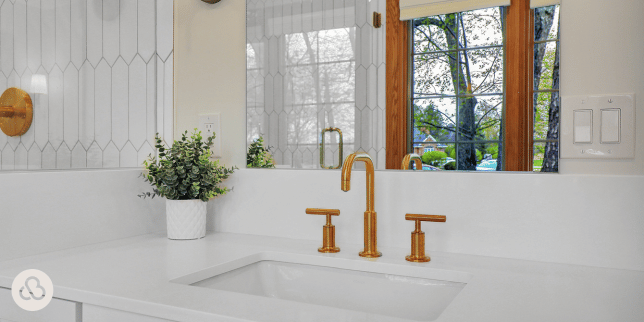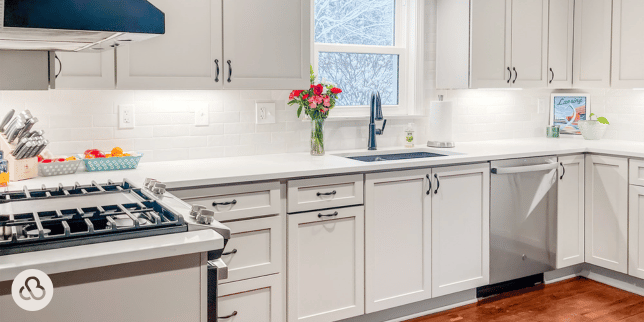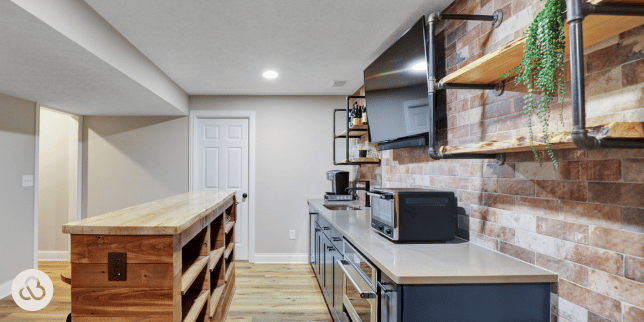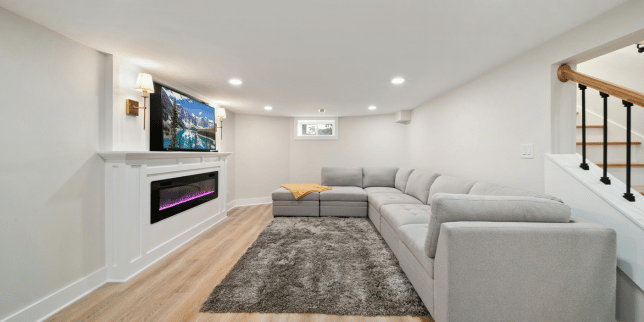Navigating Remodeling Quotes: A Deep Dive into Three Pricing Models
June 26th, 2024
6 min read

Are you confused by the pricing you’ve received from contractors for your upcoming home remodeling project? With different contractors quoting vastly different numbers, it's natural to feel confused and uncertain about how to proceed.
With over 15 years of experience in the industry, we've helped hundreds of families bring their remodeling visions to life. We know how crucial it is to choose the best contractor for your project and are here to help you understand what each model entails, enabling you to navigate quotes confidently and make a well-informed choice for your home renovation.
In this article, we will dive into the top three pricing models contractors use, the pros and cons of each, and tips on how to choose the best model for you:
1. Fixed-Price Contract
Let's delve into the Fixed-Price model. This method is often used with companies that have a thorough, upfront design specification process—meaning all material and product selections are confirmed, and full construction drawings are utilized to get full estimates from subcontractors. Our team here at Custom Built uses this method to price out client projects.
In the Fixed Price model, the entire project plan, including all product selections, scope of work, and scaled construction drawings, is finalized before the contract is signed. This comprehensive plan encompasses design details ranging from window types to built-in features, electrical plans, plumbing, HVAC considerations, and more. By having a complete plan and scope of work upfront, the builder can accurately determine the fixed project price by soliciting bids from trade partners, calculating true material costs, and factoring in labor and overhead expenses.
Pros:
- Clarity: With all details finalized upfront, homeowners clearly understand what to expect from the project, minimizing uncertainty.
- Reduced Risk: Homeowners have minimal risk as the builder bears the brunt of potential cost overruns.
- Fewer Changes: The comprehensive project plan reduces the likelihood of change orders and extended time arising during construction.
Cons:
- Upfront Investment: Finalizing all project details before signing the contract will require additional time and investment upfront. From our experience, we’ve found it is difficult to make these precise design decisions quickly.
- Limited Flexibility: Once the contract is signed, changing the project scope or specifications may be challenging and incur additional costs.
2. Contract with Allowances
Let's dive into the Contract + Allowances model, an alternative to the Fixed-Price approach. While this method offers details, it may lack the precision and selection specification of a Fixed-Price plan.
In the Contract + Allowances model, certain material and labor allowances are included in the project price. However, the final cost will fluctuate based on your chosen materials, typically resulting in additional expenses. Depending on your materials, your labor costs will vary (e.g. herringbone tile will cost more in installation).
Builders may favor this model due to its flexibility and low-risk impact. However, if you work with a contractor under a contract + allowances pricing mode, be prepared for additional costs. Often the amounts allocated for each material are low.
To effectively manage potential overruns in the Contract + Allowances model, you can employ several strategies:
- Thorough Research: Conduct extensive research on material options and their associated costs to make informed decisions within the allocated allowances.
- Regular Communication: Maintain open communication with the builder throughout the project to stay informed about any deviations from the initial allowances and discuss potential solutions.
- Contingency Planning: Set aside a contingency fund to cover unexpected expenses that may arise due to material selections or changes in project scope.
By proactively addressing potential overruns and maintaining clear communication with the builder, you can navigate the Contract + Allowances model more effectively.
Pros:
- Flexibility: The Contract + Allowances model allows for greater flexibility in material selections and design choices compared to a Fixed-Price contract.
- Cost Ownership: The materials you select will directly impact the cost of the project. You are able to own and greatly influence cost based on your selections.
- Simplified Design Process: Builders may find this model easier to navigate as it streamlines the design and selection process. This model is often not as streamlined for you as the homeowner, potentially requiring multiple design consultation meetings with 3rd party designers/architects.
Cons:
- Potential for Cost Overruns: The allowances predetermined by your contractor could be low, leading to cost overruns.
- Limited Cost Certainty: Homeowners may face uncertainty regarding the final project cost until material selections are finalized, potentially impacting budget planning.
- Increased Complexity: Managing multiple allowances and potential changes throughout the project can add complexity to the design process. However, if you are a hands-on person who enjoys project management, this could benefit you!
3. Cost-Plus Contract
Let's delve into the Cost-Plus model, an approach that provides transparency through open-book pricing. This model is most commonly used by handyman contractors and some larger builds.
In the Cost-Plus model, homeowners have visibility into every invoice and labor charge, clearly understanding the project's expenses after construction. This transparency allows for greater flexibility in decision-making. However, it also places most of the financial risk on the homeowner.
To mitigate risks associated with the Cost-Plus model, homeowners can implement the following strategies:
- Frequent Budget Reviews: Conduct regular reviews of project expenses to track spending and identify any deviations from the budget. This proactive approach allows homeowners to promptly address potential cost overruns and make necessary adjustments.
- Clear Communication: Maintain open communication with the builder throughout the project to discuss budgetary concerns and ensure spending priorities align.
- Establishing a Contingency Fund: Set aside a contingency fund to cover unexpected expenses or changes in project scope. Having a buffer can provide peace of mind and mitigate financial risk.
- Negotiating a Fixed Fee: While Cost-Plus typically involves a percentage-based fee, homeowners can negotiate a fixed fee arrangement with the builder to provide more predictability in project costs.
Pros:
- Transparency: Homeowners have visibility into project expenses, promoting trust and accountability between the homeowner and builder.
- Flexibility: The Cost-Plus model allows for greater decision-making flexibility and accommodates project scope changes more easily compared to fixed-price contracts.
- Project Start Time: You can start your project sooner because the builder doesn’t have to price it out; they can figure it out as they go.
Cons:
- Lack of Cost Control: Builders may have limited incentives to control costs, potentially leading to higher-than-anticipated project expenses.
- Open-Ended Expenses: Homeowners do not know the final project cost until construction is complete and all invoices have been paid. This increases uncertainty and financial risk.
- Less Builder Clarity: Because you can start your project sooner, your builder might not have a clear understanding of your desired material selection - this can lead to potential delays or extended remodel timelines.
5 Ways You Can Identify Your Prospective Remodeling Partner's Pricing Model
1. Ask Directly
- Inquire about their pricing approach during initial consultations.
- Ask if they offer Fixed Price contracts, Contract + Allowances, or Cost-Plus agreements.
- A reputable company will be transparent and open to discussing their pricing structure.
2. Review Contract Language
- Examine the language and terms used in their contracts and proposals.
- Fixed-Price contracts will begin with a proposed budget range. The final contract will be signed with a construction plan, scope of work, and other project specific documents that define the entire project.
- Contract + Allowances agreements will include predetermined allowances, indicating a flexible pricing approach.
3. Clarify Allowances
- Seek clarification on how allowances are calculated and what they cover.
- Review what contractor is allotting for material costs, do research on the selections you are leaning towards to ensure the amounts will cover your true costs.
- Fixed-Price contracts typically have no allowances, while Contract + Allowances agreements divide specific amounts for certain items.
4. Inquire About Change Order Policies
- Understand their policies regarding change orders.
- Fixed-Price contracts have fewer change orders, while Contract + Allowances or Cost-Plus agreements may see more adjustments to project scope or material selections.
5. Review Past Projects
- Evaluate past projects to assess their pricing model and project management.
- Look for indicators such as project timelines, budget adherence, and communication.
- Assessing previous projects provides valuable insights into their pricing model and professionalism.
Next Steps to Hiring Your Remodeling Partner
Now that you understand the nuances of each remodeling pricing models is crucial for homeowners embarking on a remodeling project initial uncertainty and confusion surrounding pricing structures can quickly dissipate and be replaced with confidence.
By exploring Fixed Price contracts, Contract + Allowances agreements, and Cost-Plus structures, we hope you have gained valuable insights into the intricacies of each pricing model.
Through our 15+ years of expertise, we are committed to empowering homeowners with the knowledge and expertise to make informed decisions about their remodeling projects.
If you have a project in mind and would like to take the first step forward, schedule a consultation - we'll help you make an informed decision.
Now that you know more about the types of remodeling pricing models, let’s take a look at whether a design-build firm like Custom Built is right for you, how we will approach your project, and other ways to vet your remodeling partner options:
- Top 4 Differences Between a Design-Build Firm and a General Contractor - A comparison between design-build firms and general contractors that highlights the pros and cons that each remodeling company brings to the table.
- Dream, Design, and Build: Our Remodeling Process - This guide details how we at Custom Built will approach your remodeling project, including who you will work with and when to expect each crucial step of your renovation to occur.
- Top 8 Questions to Ask Before Hiring a Remodeling Contractor - A list of essential questions to ask your prospective remodeling contractor before hiring them for your project; with additional questions included in each section.
Michael brings over 2 decades of building and remodeling experience to his position as the Owner and Visionary of Custom Built. Michael’s passion to make an impact on the home building industry has led him to serve for over ten years at the local and state Home Builders Association, culminating as President of the HBA of Michigan in 2020.
Topics:


























